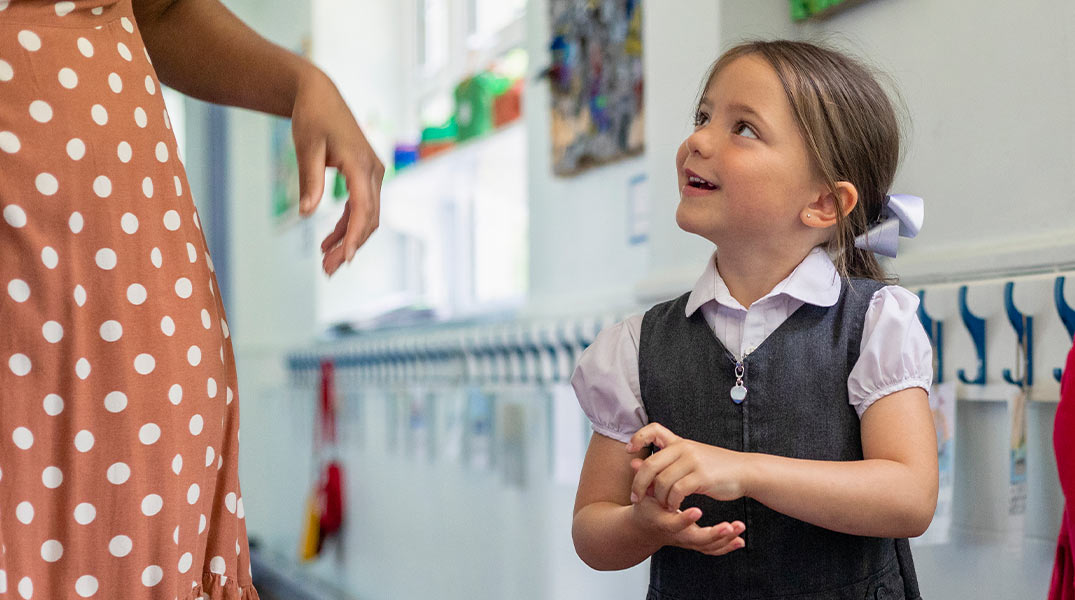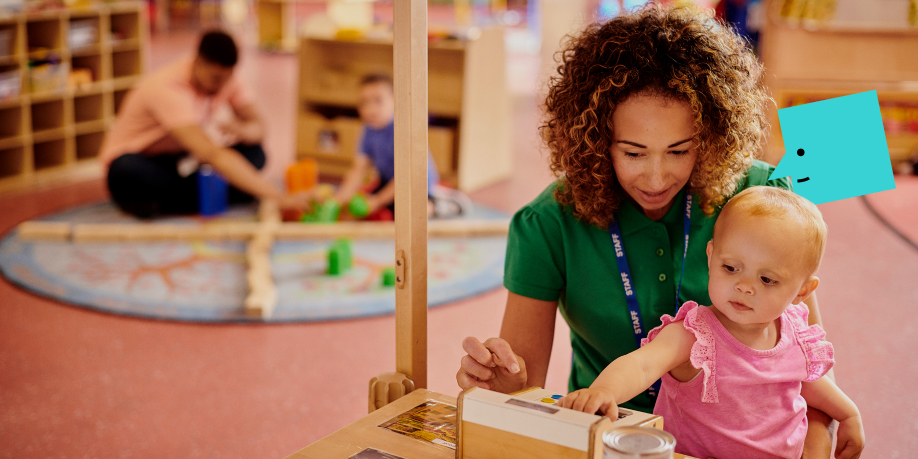Signs and symptoms
Learn more about the signs and symptoms children struggling with talking and understanding words may experience.

This page gives a guide for parents/carers of some possible signs and symptoms of speech and language challenges in children. However, not all children who show these signs will have speech and language challenges.
For more information, have a look at:
- Our Ages and Stages section for a guide to typical speech and language development at different ages.
- Our Progress Checker for a quick check of your child’s skills against what’s expected.
Children and young people who have challenges with talking and understanding words may experience difficulties in any of the areas described below.
Understanding means how children understand and make sense of words and sentences that people say to them. This is also sometimes called ‘receptive language’. Children learn to understand words and sentences gradually over time.
Children can have challenges with the following skills that are related to understanding:
- Listening, paying attention to and remembering what people say.
- Learning and remembering new words.
- Understanding different sentences, particularly longer or more complicated sentences.
- Understanding grammar such as word endings (e.g. words with ‘-ed’ on the end mean something happened in the past).
- Making sense of ‘hidden meanings’.
Children who have difficulties understanding may find some of the following things tricky:
- Following requests you give them. They might seem to ignore you, or they might follow only part of the instruction and ‘forget’ the rest.
- Listening and paying attention, for example they might find it hard to share a whole book with you or they might seem to ‘tune out’ while you’re talking to them.
- Answering questions you ask them. They might seem to ignore you or they might give an answer that doesn’t make sense.
- As they get older, children might find it hard to understand terms of phrase such as ‘pull your socks up’ or ‘get a wriggle on’. They might also find it hard to follow jokes and slang.
- Staying calm – it can be frustrating, confusing and stressful when you don’t understand what people are saying.
Signs to look out for depend on the age of your child. Have a look at our Ages and Stages page for a guide to typical development and some things to look out for at different ages.
Talking means the words, phrases and sentences that children say. This is sometimes called ‘expressive language’. Expressive language skills don’t just include talking – children who use sign language or communicate using a communication device (sometimes called Augmentative and Alternative Communication, or AAC) still use their expressive language skills.
Children can have challenges with the following skills that are related to talking or expressive language:
- Learning and using new words.
- Putting words together in the right order in sentences.
- Using all the important words in a sentence, including little words like ‘a’ and ‘is’, and the correct grammar and word endings.
- Putting sentences together in a longer story in a way that is easy to follow and understand.
Children who have challenges with talking might find the following things tricky:
- Being able to tell you what they want or need.
- Telling you about something they have done in a way that you can follow and understand.
- Telling you how they are feeling and why.
- Having a conversation.
Signs to look out for depend on the age of your child. Have a look at our Ages and Stages section for a guide to typical development and some things to look out for at different ages.
Speech means how children say the sounds in words. Speech sounds are the sounds we use for talking. As children learn to talk, they gradually learn to make more and more speech sounds. It’s normal for children to make some mistakes with speech sounds when they are young. By five or six years old, most children are easy to understand and they can say nearly all speech sounds clearly.
Children can have difficulties with speech sounds for a number of different reasons. Their difficulties can be linked to:
- Challenges with other communication skills, for example, challenges with talking and understanding words.
- Challenges with hearing, including glue ear.
- Having a physical condition that affects speech, such as cleft palate.
- Having another condition like Cerebral Palsy or Down’s syndrome can sometimes affect the muscles involved in speech.
- Having a ‘family history’ of speech difficulties – other family members who needed help with their speech sounds.
A speech and language therapist might use different terms to refer to children’s difficulties with speech, such as ‘phonological difficulties’, ‘phonological disorder’, ‘speech sound disorder’, ‘apraxia of speech’ or ‘dyspraxia’.
Children who have difficulties with speech sounds may struggle with:
- Saying what they want or need in a way that others can understand.
- Staying calm – some children get very frustrated when others can’t understand them.
- As they get older, children might struggle with learning to read and write.
Signs to look out for depend on the age of your child. For more information about typical development of speech sounds and what to look out for, have a look at our factsheet here.
Many children go through a phase where they struggle to talk ‘smoothly’ or fluently when they are little. This is sometimes called ‘stammering’ or ‘stuttering’. Stammering often begins between the ages of two and five, when children are starting to talk using more words and longer sentences.
Stammering is when a child, young person or adult talks in the following ways:
- They get stuck trying to say a word: ‘I want some… juice’
- They stretch sounds in words: ’Can I have a ssssstory?’?
- They repeat sounds in words or parts of the word: Mu-mu-mu-mummy
- They repeat whole words: ‘Where where where are we going?’
- They may try to stop or hide their stammer by tensing their body or holding their breath.
For most children, their stammers go away in time. Some children continue to stammer throughout childhood and into adulthood.
Some families feel concerned when their child starts to stammer and want to help their child. Some families and some adults who stammer take pride in their stammering and see it as part of what makes them unique.
More information and advice can be found in our factsheet on stammering here.
Social communication means the skills children use to be social with others. These are also sometimes called ‘social skills’ or ‘social interaction skills. These skills start to develop from a very young age and continue developing all throughout childhood and into adulthood. We use these skills to build friendships and relationships with others.
Social communication skills include things like:
- Using actions and gestures such as pointing, waving to say ‘hello’ or shrugging your shoulders to indicate you don’t know something.
- Showing an awareness of and interest in other people.
- Using facial expressions to show how you are feeling and noticing the facial expressions of others.
- Starting and keeping conversations going.
- Responding to conversations started by others and joining in with interest.
- Taking turns in conversations and play.
Social communication skills vary across different cultures and groups of people. We now know that there is no one set of ‘typical’ social communication skills – people may show differences in these skills based on a number of factors. For example, different cultures vary in what is considered ‘typical’ social communication. Children who are ‘neurodivergent’ (meaning they learn in a different way to what is considered typical) may have differences in their social communication skills.
Have a look at our Ages and Stages section for some more information about development of social communication skills at different ages and some things to look out for at different ages.
Child's progress checker
Our progress checker is based on what we know about how babies and children develop skills. Choose the age of the child and then answer the questions. At the end, we will direct you to some helpful advice and resources.

